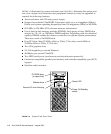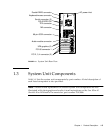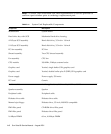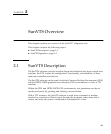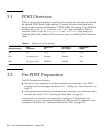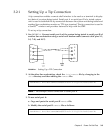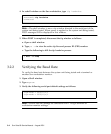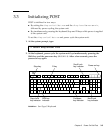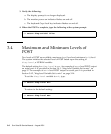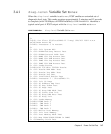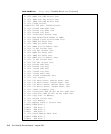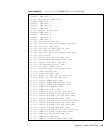
3-2 Sun Ultra 60 Service Manual • August 2001
3.1 POST Overview
POST is useful in determining if a portion of the system unit has failed and should
be replaced. POST detects approximately 95 percent of system unit faults and is
located in the system board OpenBoot
™
PROM (OBP). The setting of two NVRAM
variables, the diag-switch? and the diag-level flag, determine if POST is
executed.
TABLE 3-1 lists the diag-switch? and diag-level flag settings for
disabling POST (off), enabling POST maximum (max), or enabling POST minimum
(min).
3.2 Pre-POST Preparation
Pre-POST preparation includes:
■ Setting up a tip connection to another workstation or terminal to view POST
progress and error messages. See Section 3.2.1, “Setting Up a Tip Connection” on
page 3-3.
■ Verifying baud rates between a workstation and a monitor or a workstation and a
terminal. See Section 3.2.2, “Verifying the Baud Rate” on page 3-4.
If a terminal or a monitor is not connected to serial port A (default port) of a
workstation or server to be tested, the keyboard LEDs are used to determine error
conditions. See Section 3.7, “System and Keyboard LEDs” on page 3-22
TABLE 3-1 Diag-Level Switch Settings
Diag-Level Setting
POST
Initialization
Serial Port A
I/O
Serial Port A
Error Output
Diag-Switch?
Setting
Off No N/A N/A N/A
Max Yes (power-on) Enabled Enabled True
Min Yes (power-on) Disabled Enabled True



